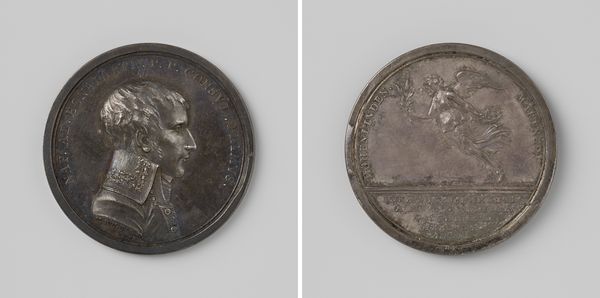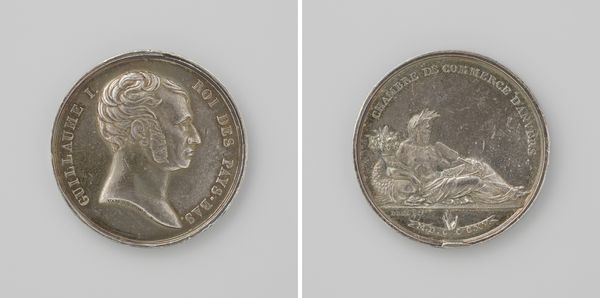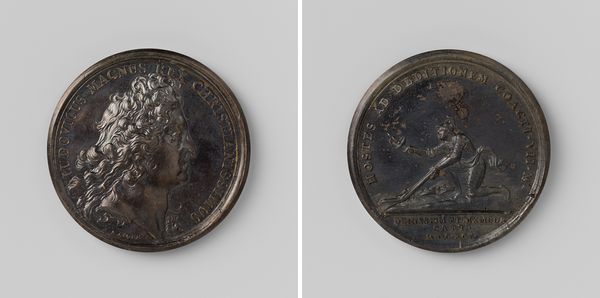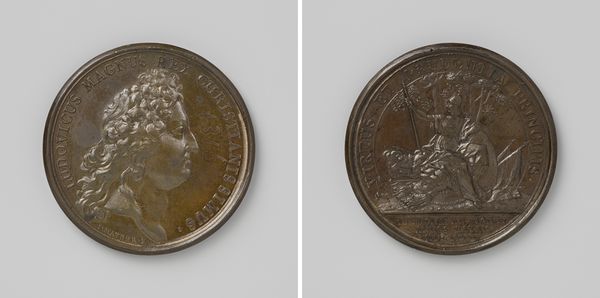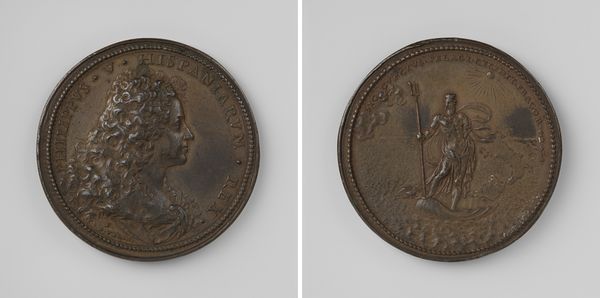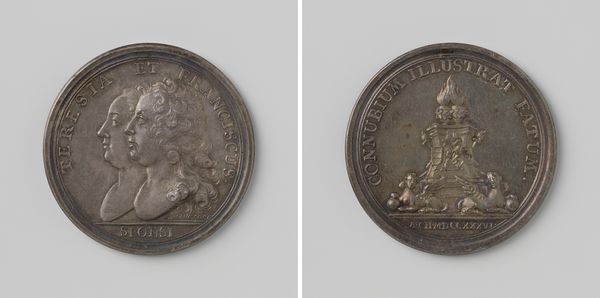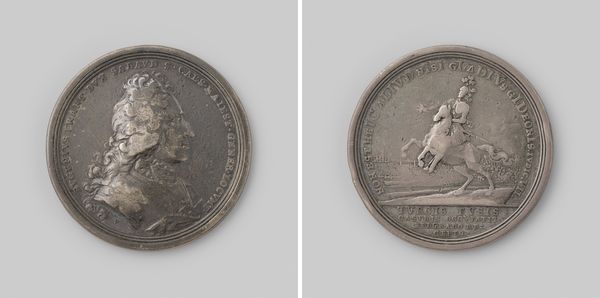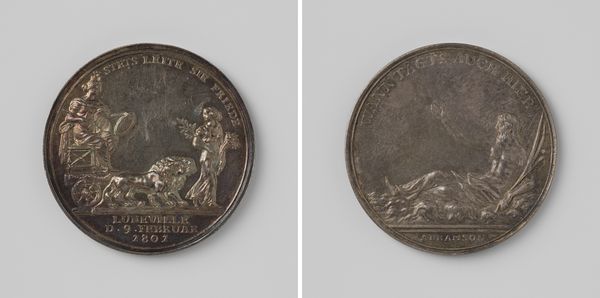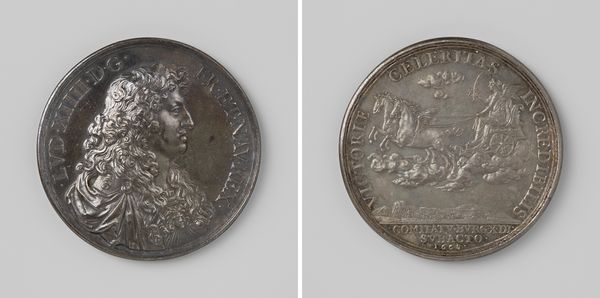
metal, relief
#
portrait
#
medal
#
baroque
#
metal
#
relief
#
history-painting
Dimensions: diameter 4.1 cm, weight 26.33 gr
Copyright: Rijks Museum: Open Domain
Editor: Here we have "The destruction of the Spanish cavalry at Lens", a metal relief medal created between 1699 and 1703 by Jean Mauger. It has two sides depicting a regal head and an armored figure standing over wreckage. What strikes me is how idealized the imagery is despite its depiction of war; how can we understand this contrast? Curator: This medal serves as potent propaganda, idealizing power and obscuring the harsh realities of war. Consider the historical context: Louis XIV's reign was marked by expansionist policies and constant warfare, significantly impacting various populations. This medal doesn't portray the suffering, does it? Editor: No, it presents a very clean, almost heroic narrative. Curator: Exactly. Think about whose story is being told, and who is silenced. The medal celebrates Louis XIV's victory, reinforcing his authority and legitimizing his actions. But what about the perspectives of the defeated Spanish, the civilians caught in the conflict, or even the French soldiers who experienced the brutality of war firsthand? Where are their voices represented? Editor: So, the idealization isn't just aesthetic; it’s a deliberate act of political messaging that suppresses other narratives? Curator: Precisely. It's crucial to analyze the power dynamics at play. By focusing solely on victory and idealized leadership, the medal masks the human cost of war and reinforces a particular ideological stance. Does understanding this make you reconsider its celebratory tone? Editor: Absolutely. Seeing it as a piece of political messaging changes everything. I’m much more aware of the hidden voices within it now. Curator: Indeed. Examining art through an intersectional lens allows us to unearth these complexities and engage with a more comprehensive understanding of history and representation.
Comments
No comments
Be the first to comment and join the conversation on the ultimate creative platform.

